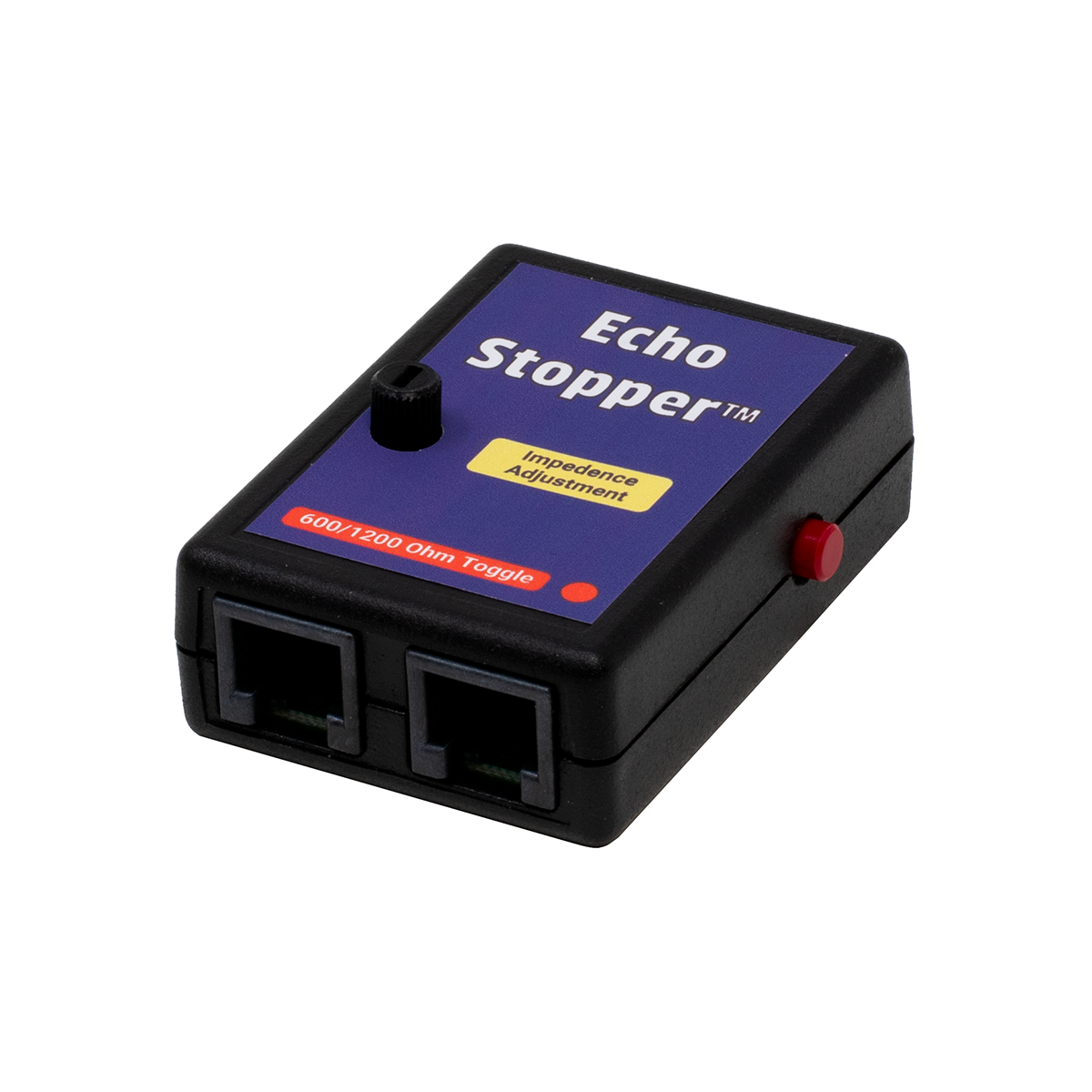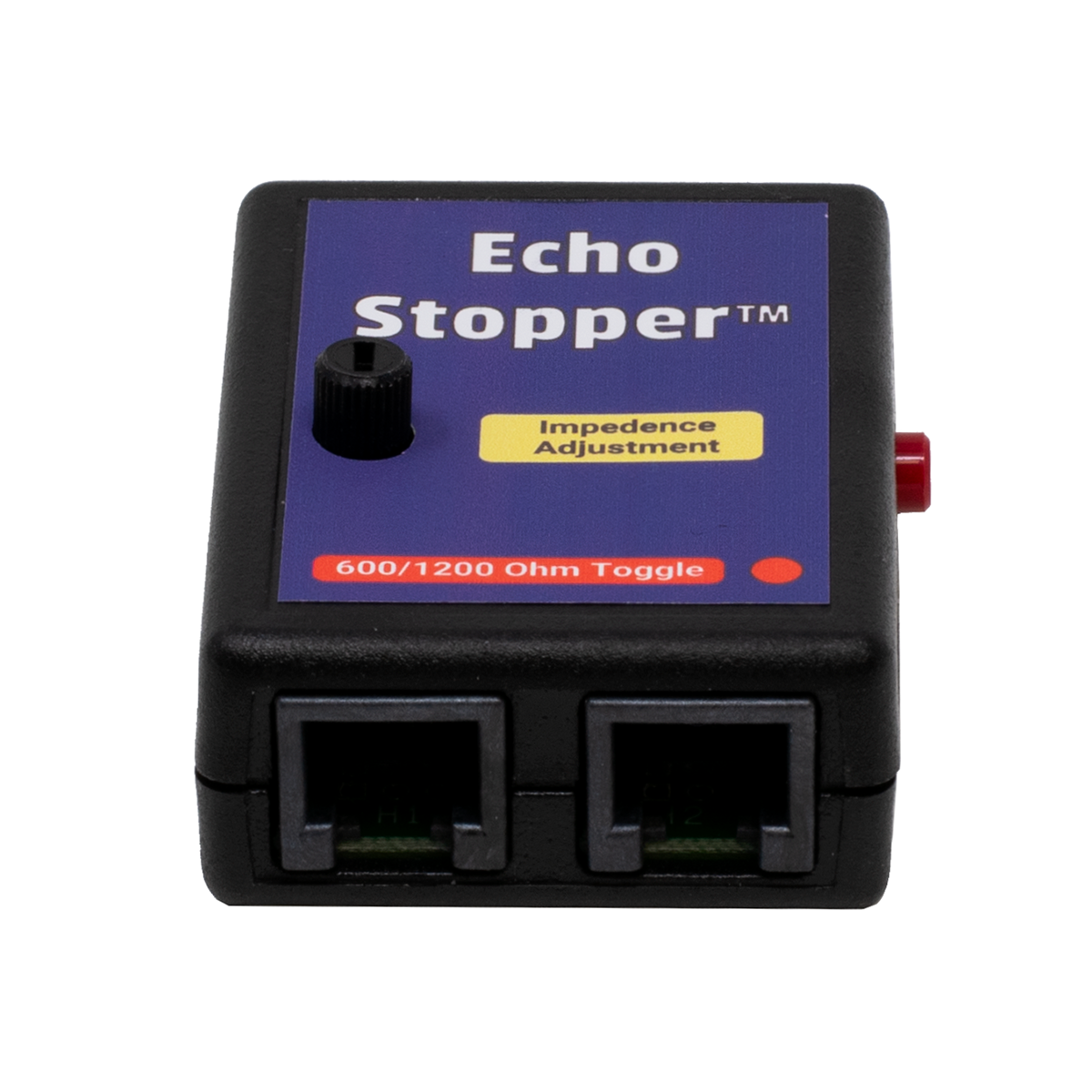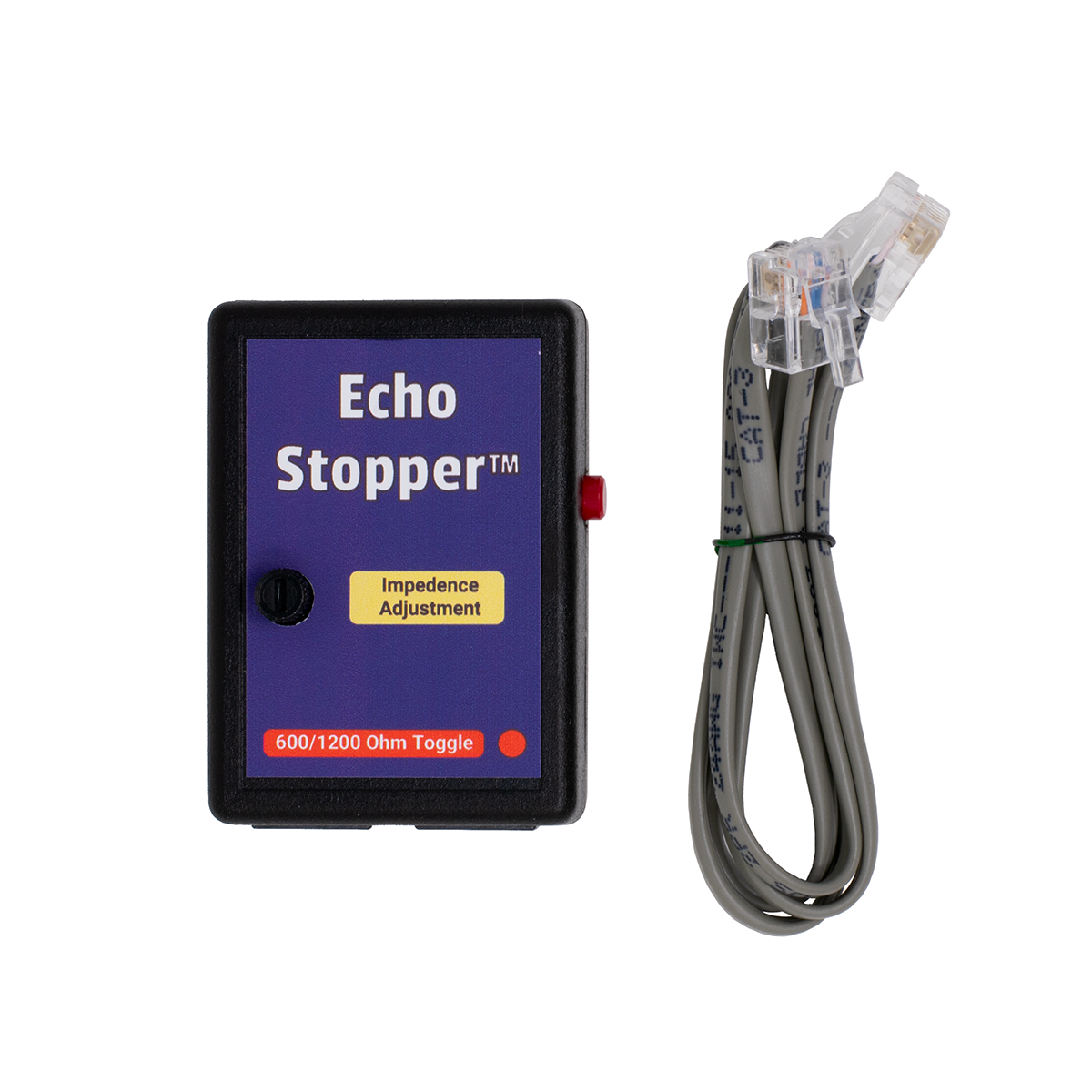#WAL5F - Echo Stopper




SKU: #WAL5F
Price: $49.95
In Stock
Product Highlights
- Adjustable Line Impedance Matcher
- Eliminate Echo on VoIP Calls
- Fix DTMF Recognition Problems
Warranty & Terms
- 1 Year Warranty
- 30-Day Money Back Guarantee
- See Full Warranty / Ordering Terms
Product Details
Echo Stopper™ Adjustable Line Impedance Matcher
• Matches telephone equipment to the phone line to reduce echo and fix DTMF recognition problems.
• Makes up for impedance mismatches between the phone line and the trunk card's hybrid transformer.
• Stops Echo on VoIP Phone Systems!
The Echo Stopper™ Adjustable Line Impedance Matcher changes the impedance from about 600 to 1200 ohms, depending on which way the Red Range Switch is pushed, and how you adjust the potentiometer.
If you always hear echo on every call, and you don't hear echo using your Butt-set, there's a 99% chance the Echo Stopper™ will eliminate the echo!
The Echo Stopper™ enables a technician to adjust the impedance of a phone line to match the hybrid transformer on the CO line card on a phone system. VoIP phone systems are most likely to have echo problems because of the time it takes to convert analog to VoIP packets.
Cellular to POTS adapters (like Telular®) also have a lot of delay and are likely to have echo if there's an impedance mismatch that's greater than the built-in echo canceller can handle.
Because the technician can adjust the Echo Stopper™, impedance mismatches caused by improperly placed load coils can be adjusted to make the telephone system's hybrid as efficient as possible, reducing reflected signals and echo. It's difficult to detect improperly placed load coils, and most phone companies will ignore a trouble call like this.
Since DTMF digits are easily distorted by impedance mismatches, the technician may be able to improve DTMF digit recognition on automated attendants and voice mail systems with the Echo Stopper™.
If you can reproduce the echo or DTMF digit recognition problems, you should be able to determine if the Echo Stopper™ will help in minutes.
To use the Echo Stopper™, the technician must be able to reproduce the echo. If the echo is intermittent, it probably can't be fixed by the Echo Stopper™ since it's either coming from the other end of the call, or caused by the lack of echo cancellers on only some trunks in the CO. When you hit a trunk in the CO without an echo canceller, you hear echo on that call. There's nothing that a technician can do to fix that problem unless the phone company will help (unlikely!).
The technician can listen for the echo by either calling in to the system from another line or using a phone on the system to call out. The technician simply tries the Echo Stopper™ on the line being tested by putting it in-series and adjusting the potentiometer until the echo goes away. If the echo doesn't go away, just hit the Red Range Switch, and try adjusting the potentiometer again. It's modular in and out (direction doesn't matter, use either mod jack).
The Echo Stopper™ comes with a 2-foot solid copper mod cord which can be cut and punched down on a 66 or 110 block.
In the old days, telephone system manufacturers often put jumpers on the trunk card or allowed the technician to choose a 600-ohm or 900-ohm termination in programming to match the impedance of the phone line. Many manufacturers have stopped giving technicians that option, which has made it impossible to get rid of problems caused by the impedance mismatch.
Today, simply choosing 600-ohm or 900-ohm may not be enough. If there are improperly placed load coils on a line, it might take 850 ohms or 1150 ohms to best match the impedance of the line to the phone system's hybrid. The Echo Stopper's patent pending technology lets the technician adjust for the closest impedance match, giving you the best shot at eliminating echo and DTMF problems.
There are no testers that are easily used in the field to allow a technician to determine the impedance of the telephone line or CPE equipment. The quick test is to put the Echo Stopper™ in-series with the telephone line or analog station port, then adjust the potentiometer/Range Switch to see if your problem clears.
Changing the impedance of the line can correct quite a few problems:
• DTMF Recognition Problems
• Volume Problems
• Distortion Problems (funny sounding voice)
• Echo Problems
• Modem Speed or Connection Problems
• Cellular to POTS adapters (like Telular®)
The Echo Stopper™ isn't Magic... But it's Close!
The Echo Stopper™ is not an echo canceller, which is usually built-into VoIP phone systems. The Echo Stopper™ changes the impedance of the line before it gets into the phone system, which reduces audio that's reflected by the hybrid (that causes echo). There's only so much echo that a phone system's echo canceller will eliminate. If you hear echo for the first second or two of a call, the built-in echo canceller is training itself. Using the Echo Stopper™ in-front of the phone system can reduce echo to the point where the built-in echo canceler can work.
IMPORTANT NOTE: A customer called and said that on the Mitel systems he works on there's an Auto, 600 and 900 impedance setting. None of those settings work for him on that system, but he said he learned to set it at 600 ohms and let the Echo Stopper™ match the impedance of the line to the trunk card in the system. He said not to leave it on Auto! He said it takes about 20 seconds after going off hook for the echo to go away using the Echo Stopper if the system is set to Auto.
If you'd like more information on how the impedance of the phone system, analog station port or phone line can cause problems, see our Echo Elimination and DTMF Problem Tech Bulletin.
If you need to put in a bunch of Echo Stoppers™ as the same location, contact us for more details on the 25-Line Telephony Chassis version.
Keep an Echo Stopper™ in your case...
It will only take you a few minutes to try it, and there's no way to know if it will work if you don't try it!
Photo Gallery




 Products
Products